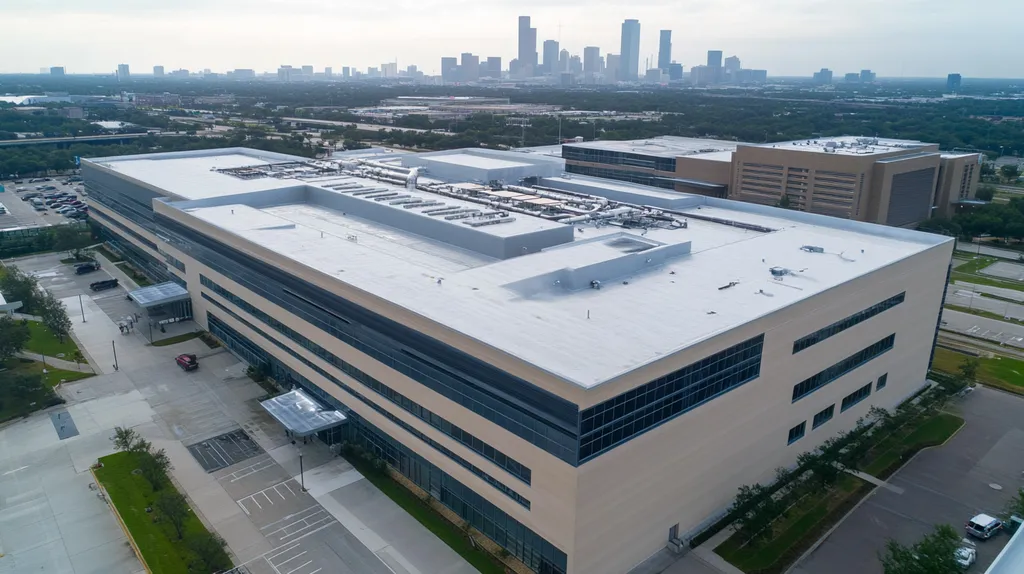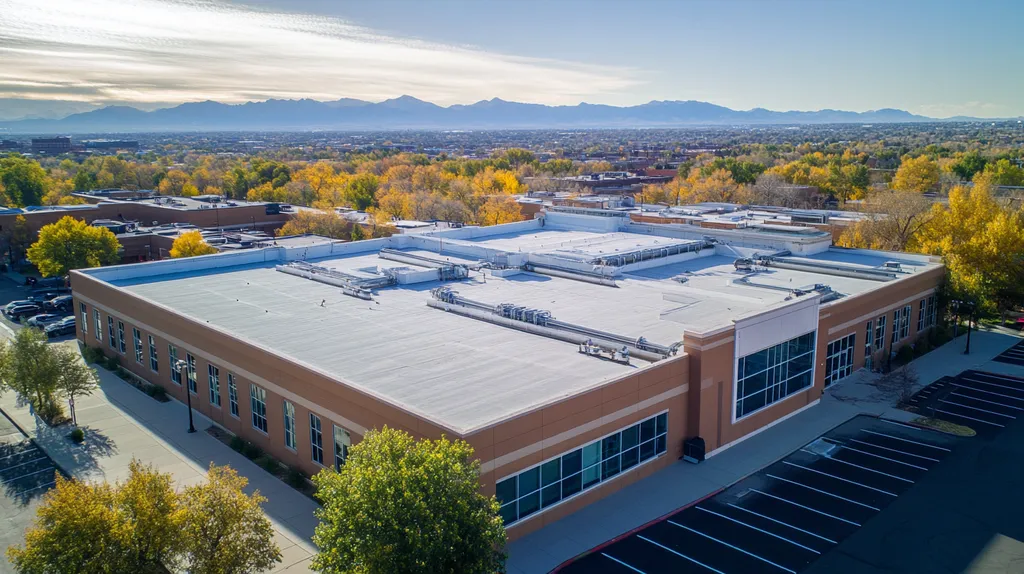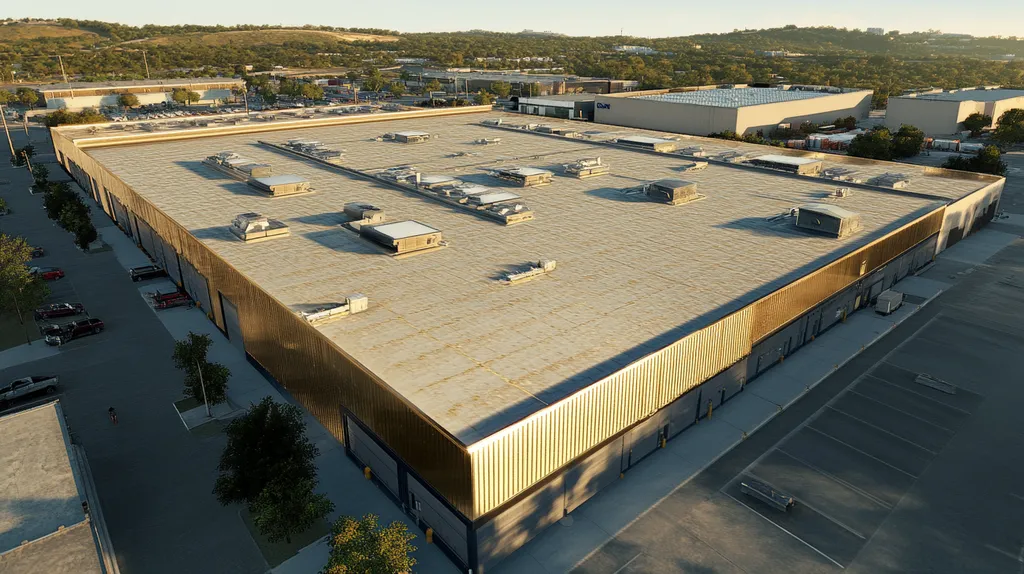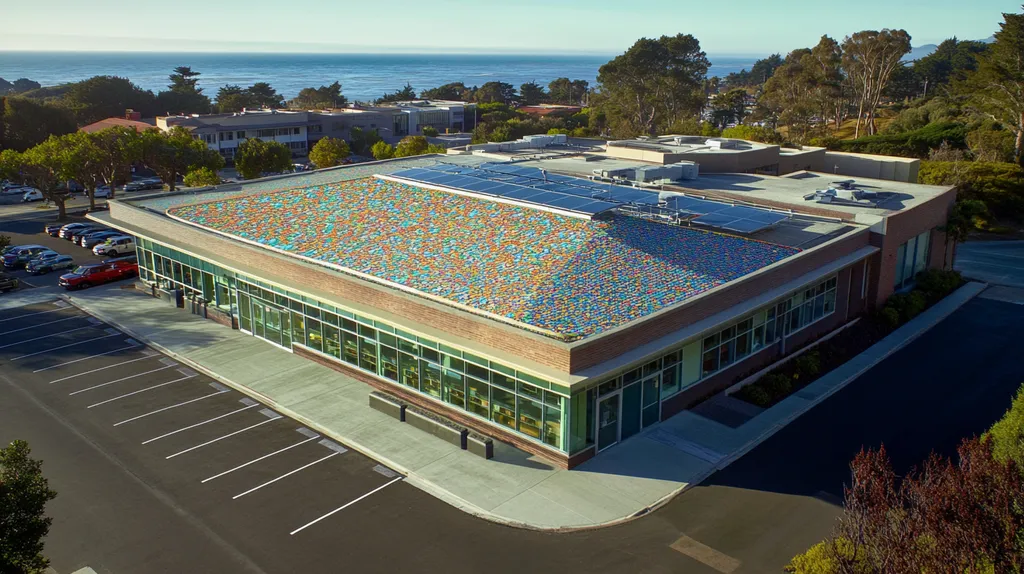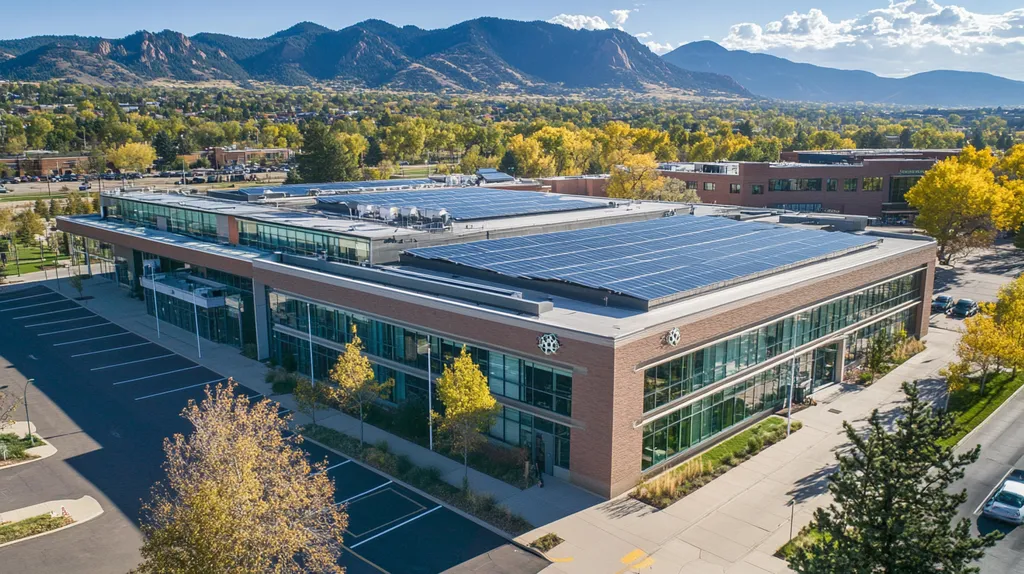In today’s commercial roofing landscape, over 40% of warranty claims are denied due to improper documentation and maintenance oversights, leaving property owners exposed to substantial financial risks.
With coating warranties extending up to 20 years and representing investments often exceeding $100,000, the stakes for proper warranty management have never been higher.
This comprehensive guide equips property professionals with actionable strategies for maximizing warranty protection through proper performance monitoring, financial planning, and regulatory compliance.
From material selection to maintenance protocols, discover how to transform complex warranty requirements into clear, implementable solutions that safeguard your roofing investment.
SECTION 1: PERFORMANCE FACTORS
Grasping the performance factors of roof coatings is vital for property owners looking to safeguard their investments. Alarmingly, studies reveal that about one-third of commercial roofs fail early due to poor material choice and insufficient weather resistance. Essential elements like durability, UV protection, and adhesion play a crucial role in determining the strength of long-term warranties. By evaluating these factors, property professionals can select coatings that best meet their maintenance objectives and budget needs.
Material Durability and Lifespan
Material durability stands as a key pillar for effective roof coating applications. Coatings crafted from superior materials can substantially prolong the lifespan of commercial roofs. For instance, polyurethanes generally outlast acrylics, delivering enhanced resistance to the rigors of daily use.
It’s essential to assess common materials used in roof coatings against their expected lifespan. A coating that lasts only five years will demand more frequent replacements, leading to increased costs over time. In contrast, opting for a high-durability material can yield significant long-term savings and minimize disruptions.
Manufacturers frequently provide lifespan estimates backed by rigorous testing and performance data. Property managers should critically evaluate these claims and seek substantiated information. Making the wrong choice can jeopardize the roof’s effectiveness and potentially lead to expensive repairs.
Key Action Items
Weather Resistance and UV Protection
Weather resistance is crucial in choosing the right roof coatings. Commercial roofs encounter a range of environmental challenges, including torrential rains and blazing sun. Coatings lacking robust weather resistance can lead to leaks and structural deterioration.
UV protection is equally important for preventing oxidation and overall degradation. Coatings with high reflective properties can help to slash energy costs while extending the roof’s lifespan. For example, high-reflectivity coatings can dramatically reduce building temperatures.
Property professionals must comprehend how various coatings fare in differing weather conditions. Some may excel in high moisture but falter in extreme heat. Conducting a detailed assessment can help avert costly mistakes.
Key Action Items
Adhesion and Coating Integrity
Adhesion is pivotal for the overall integrity of roof coatings. Inadequate adhesion can lead to peeling, blistering, and even complete coating failure. A strong bond with the existing roof substrate is essential to uphold long-term warranty claims.
Before applying a coating, property managers should ensure proper surface preparation. Adequate cleaning and priming can significantly enhance adhesion and prolong the coating’s effectiveness. Failing to prepare the surface properly increases the likelihood of warranty disputes.
Additionally, assessing the compatibility of the coating with existing roofing materials is critical. Not every coating bonds effectively with every substrate. For example, silicone coatings might struggle to adhere to specific thermoplastics.
Key Action Items
SECTION 2: FINANCIAL CONSIDERATIONS
Choosing the right commercial roof coatings is about more than just picking a fancy color—it’s about making smart financial decisions! Understanding the costs up front can lead to tremendous savings in the long run through reduced maintenance and boosted energy efficiency. Property owners must navigate the complexities of warranties, uncover hidden maintenance costs, and look at the complete financial picture to avoid any nasty surprises down the road.
Initial Cost vs. Long-Term Savings
The initial sticker shock of high-quality coatings can make property owners pause. Yet, these coatings are not just pretty; they often translate into significant savings on energy bills and a longer roof life. Research shows the right roof coating can lower cooling costs by 20% or more, putting cash back in your pocket every month.
It’s tempting for budget-minded owners to grab a bargain by choosing cheaper alternatives. But beware! These low-cost options frequently lead to unexpected repairs and replacements far sooner than expected. By investing in a durable coating now, owners can enjoy peace of mind and avoid financial surprises in the future.
Ultimately, as time rolls on, the cost-effectiveness of premium roof coatings becomes undeniable. Factoring in long-term energy savings and reduced maintenance can lead to an impressive return on investment that outshines that initial spending. Therefore, it’s essential to consider the total financial impact over the roof’s life.
Key Action Items
Warranty Coverage and Exclusions
Warranty options for roof coatings can vary significantly, and navigating them requires a keen eye. Understanding what’s included—and what’s not—can be the difference between financial peace-of-mind and unexpected repair bills. Some warranties cover such specific damage types, while others sport strict maintenance requirements that can void them entirely if not followed.
Natural calamities, improper installation, and neglected upkeep are common exclusions. Property owners should realize that neglecting to meet maintenance guidelines can lead to costly repairs that the warranty won’t cover. A thorough review of warranty terms can help identify potential financial traps.
Moreover, the length of the warranty often reflects the manufacturer’s confidence in their product. Those longer warranties typically come with a higher initial price tag yet signify better peace of mind down the road. Comparing the overall value of warranty provisions against possible exclusions is crucial.
In conclusion, working with roofing professionals to dissect warranty documents can dramatically impact a property owner’s budget and preventive maintenance planning.
Key Action Items
Maintenance and Repair Costs
Effective maintenance is crucial for reaping the benefits of a roof coating warranty. Skipping regular inspections and timely repairs can inflate costs and compromise warranty validity. Routine maintenance can catch issues before they snowball, avoiding hefty repair bills later.
Interestingly, many property owners overlook the fact that regular maintenance can extend the life of the roof beyond its original expectations. Studies indicate that properties with consistent maintenance programs enjoy over 30% longer roof lifespan compared to their neglected counterparts, which translates to big savings on replacements.
Additionally, it’s essential to factor in maintenance costs when calculating the total cost of ownership. While the upfront investment in coatings might seem intimidating, decreased maintenance needs often lead to lower overall expenses. Budgeting for regular inspections and minor repairs ensures your roof stays in tip-top shape.
Ultimately, understanding the relationship between maintenance and long-term savings empowers facility managers to allocate resources more efficiently. Creating a solid maintenance plan can provide stability and enhance financial management throughout the roof’s life.
Key Action Items
SECTION 3: COMPLIANCE REQUIREMENTS
Navigating compliance requirements is essential for the success of roof coating applications. Failure to comply can result in expensive repairs, voided warranties, and even safety risks. Alarmingly, industry estimates indicate that as much as 30% of roofing failures occur due to neglecting manufacturer and local regulations. This section highlights key compliance areas, stressing the importance of adhering to specifications, regulations, and certifications.
Manufacturer Specifications and Standards
Manufacturers set forth specific requirements for their roof coatings, detailing application techniques, environmental considerations, and curing times. Ignoring these crucial guidelines could void warranty agreements and lead to underperforming roofs. For example, applying a coating at the wrong thickness may cause early failure, affecting both durability and appearance.
Product datasheets provided by manufacturers serve as vital tools for property managers and owners to communicate effectively with contractors. Recognizing and adhering to these specifications can significantly enhance the durability and lifespan of roof coatings.
Additionally, property owners should stay updated on any revisions made by manufacturers. This vigilance not only mitigates the risks associated with outdated practices but also strengthens compliance. Collaborating with certified contractors can also yield valuable insights into best practices aligned with specific manufacturer guidelines.
Key Action Items
Local Building Codes and Regulations
Local building codes are a crucial component of roofing compliance, establishing minimum standards for safety and performance. Ignoring these codes can lead to unsafe conditions, legal issues, and costly penalties. For example, certain areas may require specific fire ratings for roofing materials that must be followed closely.
Before beginning any project, property owners and facility managers should thoroughly review local codes so they understand specific regulations that apply. Consulting with local building authorities helps ensure compliance, streamlining project approvals and resource allocation.
It’s also vital to note that local codes change over time in response to safety concerns and environmental factors. Regularly updating knowledge about these regulations is essential for maintaining compliance throughout the lifecycle of the roofing system. Utilizing platforms that track changes in building codes can empower owners and managers to adjust their strategies as needed.
Key Action Items
Industry Certification and Accreditation
Certifications and accreditations are vital for ensuring that roofing contractors adhere to industry standards. Many roofing systems require installation by qualified contractors. Engaging certified professionals typically leads to higher-quality workmanship, crucial for activating long-term warranties.
Certifications from organizations such as the National Roofing Contractors Association (NRCA) validate contractors’ expertise. Projects completed by certified professionals tend to meet best practices, yielding superior results that enhance building safety and reassure property owners about the quality of work.
Understanding industry standards empowers property owners to select contractors wisely. Choosing accredited professionals ensures installations meet or exceed industry benchmarks. It’s crucial for property professionals to request and verify accreditation documents before making hiring decisions.
Key Action Items
SECTION 4: RISK MANAGEMENT
In the world of commercial roofing, the stakes couldn’t be higher! A mismanaged roof coating can crack open the door to catastrophic water leaks and extensive property damage, leading to steep repair bills and disrupted business operations. Shockingly, over 80% of roof failures result from water intrusion, highlighting the critical need for effective risk management. This section delves into identifying potential failure points, strategies for minimizing water-related risks, and understanding the responsibilities of contractors and manufacturers.
Identifying Potential Failure Points
Grasping potential failure points in roof coatings is essential for astute risk management. Common culprits include improper surface preparation, inadequate application techniques, and the utilization of low-quality materials. Each of these factors can lead to premature failures that warranties may not cover.
For example, applying a roof coating over a dirty surface can hinder adhesion, causing blistering and peeling. This underscores the necessity of thorough inspections and diligent maintenance practices before application. Regular checks can catch minor issues before they escalate, potentially saving property owners a fortune in repairs.
Moreover, extreme weather conditions, like heavy rains and fierce winds, can amplify vulnerabilities within roofing systems. Understanding how these factors interact with roofing materials is crucial for an accurate risk assessment. Property professionals must ensure roofs are designed and fortified to resist the unique weather patterns in their regions.
Key Action Items
Mitigating Water Leak and Damage Risks
Water leaks are one of the most formidable foes insurers face regarding roof coatings. Employing proactive measures is essential to keeping these risks at bay. A cornerstone strategy involves selecting high-quality materials explicitly designed for commercial use, enhancing durability and moisture resistance.
Furthermore, property managers should champion regular maintenance schedules. Consistent inspections spot early deterioration signs, like cracks or blisters, before they escalate into severe problems. Regularly cleaning drains and gutters mitigates water accumulation, further reducing leak risks.
Contractors must be adept at effectively sealing joints and penetrations, as these often serve as gateways for water intrusion. Employing advanced sealing techniques can significantly boost a roof coating’s leak resistance. The right craftsmanship can make a world of difference in extending the roof system’s lifespan!
Key Action Items
Contractor and Manufacturer Liability
Contractors and manufacturers hold pivotal roles in the risk management landscape. Both must clearly understand their liabilities regarding roof coatings. Ambiguities in responsibilities can spur disputes and financial headaches for property owners.
Contractors need to ensure they follow proper installation protocols. Neglecting manufacturer guidelines can void warranties, leaving property owners vulnerable. Opting for experienced contractors who stay updated on the latest application techniques can prevent these pitfalls.
On the flip side, manufacturers are tasked with delivering high-quality materials and warranties that genuinely reflect product performance. Property owners ought to scrutinize these warranty terms for exclusions related to installation errors, as a lack of clarity can lead to unforeseen risks.
Furthermore, fostering strong communication between contractors and manufacturers promotes effective project execution and accountability. Comprehensive documentation of the application process and any challenges faced is crucial to mitigating risks.
Key Action Items
SECTION 5: OPERATIONAL PROCEDURES
Operational procedures are the backbone of maintaining commercial roof coatings and ensuring their warranties deliver on their promises. With approximately 25% of warranties being claimed within the first five years due to poor application, property owners must take these procedures seriously. By rigorously following application guidelines, implementing regular inspections, and mastering the warranty claim process, facility managers can safeguard their investments against costly failures.
Application and Installation Guidelines
The art of applying roof coatings is crucial for long-lasting performance. Following manufacturer specifications during installation minimizes the risk of premature failure. A clean and dry surface is essential; it ensures all debris and moisture are removed before coating application.
Temperature and weather matter too! Applying coatings under extreme weather conditions, whether too hot or too cold, can hinder adhesion and shorten lifespan. Monitoring these conditions is vital for optimal results.
Using only certified contractors for application guarantees adherence to best practices that align with warranty terms. Upskilling contractors through training programs can result in increased compliance and fewer mistakes.
Key Action Items
Regular Inspection and Maintenance Schedules
Regular inspections are the lifeblood of healthy roof coatings. Experts recommend semi-annual inspections to catch issues before they worsen. Early detection of cracks and blisters saves managers significant repair costs.
Meticulous documentation of these inspections is not just good practice—many warranties require proof of regular maintenance. This log serves as a solid defense should claims arise later.
Routine maintenance tasks, like clearing drainage areas and resealing seams, should be part of each inspection. Staying informed about specific maintenance stipulations outlined in warranty documents further ensures properties remain protected.
Key Action Items
Warranty Claim and Resolution Processes
Understanding the warranty claim process is key to swiftly addressing any coating failures. It begins by reviewing the warranty coverage provided by the manufacturer, as terms can vary widely—from coverage duration to specific issues included.
Clear documentation is essential for making any warranty claim. Keeping records of application and maintenance logs readily accessible prevents disputes and strengthens claims.
Quick action is important once an issue is detected. Many warranties stipulate that claims must be filed swiftly after failures, so prompt communication with the manufacturer is crucial. A proactive approach to resolving potential disputes can lead to better outcomes.
Key Action Items
SECTION 5: OPERATIONAL PROCEDURES
Operational procedures are essential for maximizing the performance of commercial roof coatings and ensuring their warranties provide the expected protection. Alarmingly, data shows that around 25% of warranties are claimed within the first five years due to improper application. To safeguard their investments, property owners and facility managers must strictly follow application guidelines, set regular inspection routines, and grasp the warranty claim process.
Application and Installation Guidelines
The secret to lasting roof coatings lies in their proper application. Sticking closely to manufacturer specifications during installation is key to minimizing the risk of defects. This means taking the time to prepare surfaces meticulously, ensuring they’re clean, dry, and free of any contaminants before any coating goes on.
Weather conditions also play a pivotal role! Coating materials should be applied only in optimal temperatures, avoiding extremes that can hinder adhesion and performance. Applying coatings during favorable conditions helps ensure they’re set for success.
Lastly, employing only certified contractors for the job guarantees that industry best practices are followed. Investing in training for these professionals can lead to fewer mistakes and greater compliance with specifications.
Key Action Items
Regular Inspection and Maintenance Schedules
Consistent inspections are vital for keeping roof coatings in good shape. Experts suggest conducting inspections at least biannually—in spring and fall—to catch potential problems before they escalate. Identifying issues like cracks or peeling early can save property managers significant costs down the road.
It’s essential to document every inspection thoroughly, as many warranties require proof of maintenance for validity. A well-kept log of inspections reinforces adherence to maintenance schedules, which strengthens claims if issues arise later.
Routine maintenance tasks, such as cleaning drainage areas and resealing seams, should be integrated into each inspection. This proactive style helps extend the lifespan of the coating and ensures it performs as expected. Property owners should also stay alert to specific maintenance actions required by the warranty documents.
Key Action Items
Warranty Claim and Resolution Processes
Grasping the warranty claim process is crucial for swiftly managing any coating issues. The initial step is to identify the specific coverage provided by the manufacturer, which can differ widely based on duration and included issues.
Documentation is the backbone of any successful warranty claim. Property owners should keep meticulous records of application, maintenance, and inspection logs readily accessible. Inadequate documentation can lead to disputes or outright claim denials.
Once a problem is detected, property managers must act without delay. Many warranties require quick filing, so timely communication with the manufacturer is key. A proactive approach to resolving disputes fosters better outcomes and maintains property protection.
Key Action Items
The Bottom Line
With over 40% of warranty claims being denied and coating investments frequently exceeding $100,000, proper warranty management has become a critical priority for property professionals.
Success hinges on understanding and implementing proper protocols across performance monitoring, financial planning, compliance requirements, risk management, and operational procedures.
Property owners who neglect these key areas face substantial financial exposure through voided warranties, premature coating failures, and unnecessary repairs.
By following manufacturer specifications, maintaining thorough documentation, and implementing regular inspection schedules, facility managers can maximize warranty protection while extending the lifespan of their roof coating investments.
The future of commercial roofing depends on proactive warranty management – making it essential for property professionals to stay informed and vigilant.
FREQUENTLY ASKED QUESTIONS
Q. What performance factors should I consider for my commercial roof?
A. Consider durability, UV protection, and adhesion for long-lasting results. Poor material choice can lead to early roof failure. Focus on selecting coatings that align with your maintenance goals and budget.
Q. How do initial costs affect long-term savings for industrial roofs?
A. Higher initial costs can lead to substantial long-term savings on energy bills and fewer repairs. Cheaper coatings may result in more frequent replacements and higher overall costs in the future. Invest wisely to benefit from lower maintenance and energy savings.
Q. What are the main compliance requirements for roof coatings?
A. Adhere to manufacturer specifications, local building codes, and industry certifications. Compliance ensures safety, performance, and protection against warranty voidance. Regularly update your knowledge on local regulations to maintain compliance throughout your roof’s life.
Q. How can I identify potential failure points in my commercial roof?
A. Look for signs of inadequate surface preparation, poor application techniques, and low-quality materials. Conduct thorough inspections before application to catch minor issues and prevent premature failures that warranties may not cover.
Q. What’s essential for the proper application of roof coatings?
A. Follow manufacturer specifications, ensure clean surfaces, and monitor weather conditions. Applying coatings in optimal temperatures and employing certified contractors are crucial to achieving a durable and reliable finish that meets warranty conditions.
Q. How do I navigate the warranty claim process?
A. Start by reviewing warranty coverage details, and maintain clear records of all application and maintenance activities. Promptly file claims after identifying failures, and communicate effectively with manufacturers to ensure a smooth claims process.
Q. What additional tips can I follow for roof coatings?
A. Regular training for staff and certified contractors can greatly improve installation quality. Additionally, develop a comprehensive maintenance plan to schedule inspections and deal swiftly with issues, thereby prolonging the lifespan of your roof coatings.


